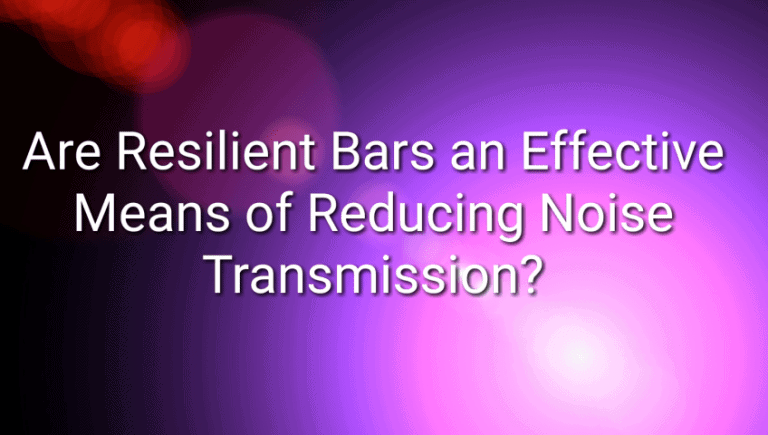What are Resilient Bars?
A resilient bar is a thin metal channel that substantially improves the sound insulation of plasterboard walls and ceilings. The channel effectively isolates the plasterboard from the stud work. Therefore, they eliminate direct contact and dissipate sound which would normally transfer through the frame.
Resilient bars help soundproof and reduce the noise of a ceiling or wall. Resilient bar systems are commonplace in suspended timber floors, especially for change of use schemes. You may also know these as soundbreaker bars or simple a noise reduction ceiling. They can be an essential part of achieving compliance with Part E of the building regulations requirements for noise control of a partition. They are often used in connection with other sound insulating materials, such as acoustic membrane plasterboard systems. Resilient bar wicks create an effective acoustic break between the bottom of existing joists and ceilings.
How do Resilient Bars Work?
The bar wicks work by decoupling the new suspended ceiling from the joists, creating a gap. This gap decreases sound transmission propagated through it, as sound vibrations travel less freely in open space than from material to material. The new noise reduction ceiling is in effect floating off the joists via a lightweight steel channel. The sound reduces as it travels through the flexible flange of the resilient bars as seen below.
Want help and advice with Sound & Acoustic Issues?
Find out more about our range of Acoustic Services
A core benefit of resilient bars is that they’re perfect for low ceilings. The bars are very thin, meaning you can soundproof a ceiling and only lose an inch of space. It’s integral that resilient bars are installed with precision and care by an expert. If the bars aren’t installed properly then the sound will travel through as usual, with no added benefit at all.
Resilient Bars to Soundproof a Ceiling
What Effect do Resilient Bar Wicks Have on Sound?
The use of resilient bars significantly improves the acoustic performance of a wide array of projects from an impact and airborne perspective, they also provide a cost-effective solution. Furthermore, acoustic insulation (another low-cost material) can be fitted between joists (as shown in pink in the image above). This allows for further attenuation of vibration and unwanted noise.
However, adopting a more complex solution also raises the issue of build quality and installation. Sound transmission is susceptible to flanking around structures if they are not installed correctly. If they are not fitted to the joists properly, the effect of decoupling by the resilient bars will be compromised. However, with proper instruction the installation methodology of the resilient bar system is simple.
Resilient bar installation
Resilient bars provide a cost-effective means of reducing noise transmission through a ceiling or wall and they are simple to install, although it needs to be done by a professional. With an incorrect installation, you will not see any of the advantages of using resilient bars. On walls, they need to be mounted horizontally from floor to ceiling at 60cm, whereas for ceilings, these need to be spaced at 40 to 45 cm, with care so that the battens are fixed through to the joists (not just the plasterboard).
Once you install a noise reduction ceiling with bar wicks you will wonder why you never did it before. Air Tightness Solutions have a positive experience of partition systems that have incorporated resilient bars as being a highly effective way of reducing propagated noise transmission.






